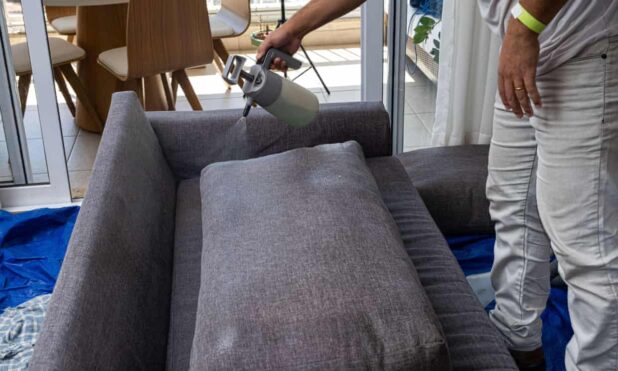Previously: Chemicals Found Literally Everywhere Linked to Infertility in Women, Study Says
America is a democracy, and that means that everything that happens is the will of the people.
Along with being stabbed on the street, Americans apparently also enjoy being poisoned.
A new peer-reviewed study calls into question how well PFAS-based products repel water and stains in furniture, shoes, clothing, carpeting, outdoor gear and other consumer goods made of fabric.
Most water and stain repellents applied to fabrics worldwide use toxic PFAS as a main ingredient, and though the controversial chemicals are in thousands of products, water and stain repellency are two of their main consumer functions.
The study, which did not name brands, compared the performances of furniture fabric treated with PFAS to untreated fabric. It found the types of fabric, wear and how consumers manage stains to be much more important in determining how well fabrics repelled water and stains, and the study’s authors characterized PFAS as having “no practical benefit”.
“It was surprising to us that it was so clear, but the reason we did the study is because we had been talking with textile manufacturers who said PFAS don’t make much difference, but nobody had studied it scientifically,” said Carol Kwiatkowski, a co-author and senior science and policy associate with Green Science Policy Institute, the non-profit behind the study.
PFAS, or per- and polyfluoroalkyl substances, are a class of about 14,000 chemicals often used to make products resist water, stains and heat. They are called “forever chemicals” because they do not naturally break down, and are linked to cancer, liver problems, thyroid issues, birth defects, kidney disease, decreased immunity and other serious health problems.
PFAS on treated fabric can break off and end up in indoor air, attach to dust, or be dermally absorbed, and the pollution is especially a problem for homes with small children. The product is commonly applied to stain-resistant apparel and products for babies and children.
The repellants are also a major source of PFAS pollution in public spaces like airports or schools where carpeting is often heavily treated with the chemicals. Some products are treated with stain repellents during production, but dozens of brands also offer home sprays that expose consumers to the chemicals.
The study only checked furniture fabric and more research would need to be done to determine the chemicals’ effectiveness in clothing or fabrics for other uses, Kwiatkowski stressed. But she added “there’s no reason to think this would not be the case in other fabrics, as well”.
It’s wild people would allow these health problems in the name of some kind of convenience.
But maybe everyone really just wants to die, and is looking for any way possible to make that happen?


